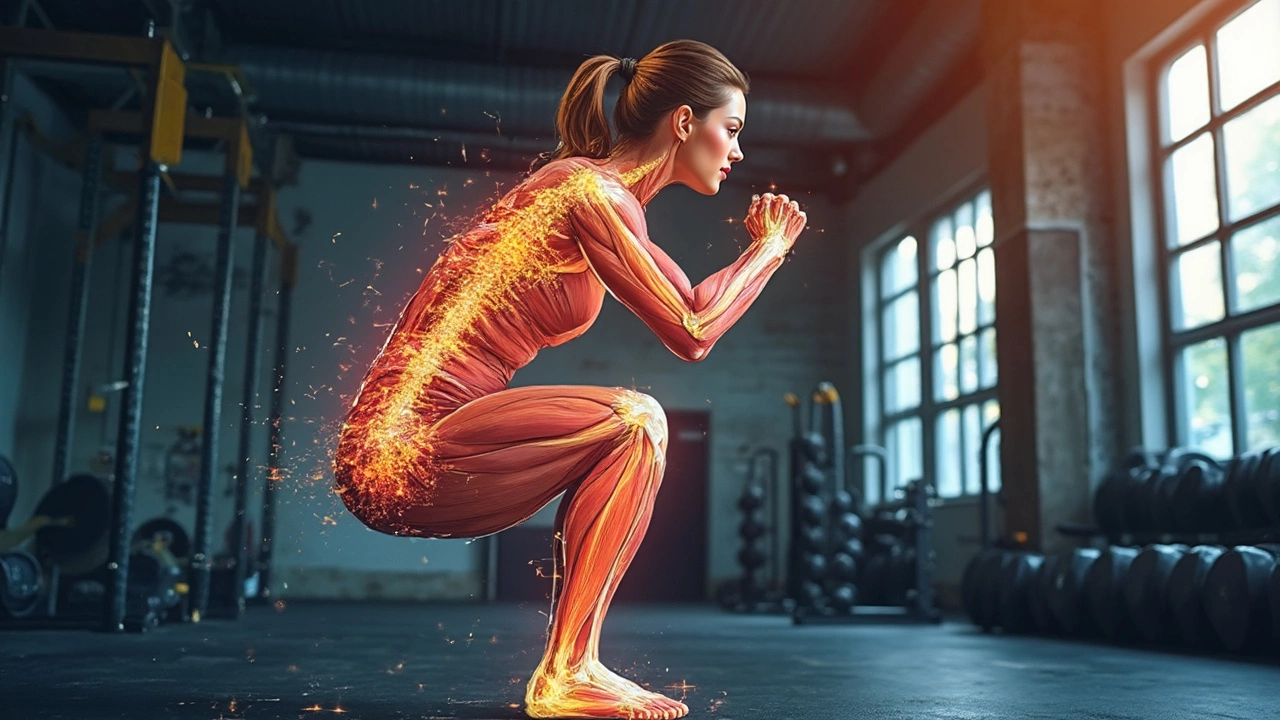
Squats – How to Perfect Your Form and Boost Strength
If you want bigger legs, better power, and a stronger core, squats are the go‑to movement. They work the quads, hamstrings, glutes, and even your back if you do them right. Below you’ll find simple, no‑nonsense advice that you can use today, whether you train at home or in a gym.
Why Squats Matter
Squats are called a ‘compound’ exercise because several joints move together. That means you get more muscle work in less time compared with isolation moves like leg extensions. They also improve balance and help protect your knees by strengthening the surrounding muscles. Because they recruit large muscle groups, you’ll burn more calories during and after the set.
Key Tips for Safe and Effective Squats
1. Foot placement: Keep your feet shoulder‑width apart or a little wider, toes pointing slightly out. This position lets your hips open and reduces stress on the knees.
2. Chest up, back neutral: Imagine a shelf on your shoulders and keep it level. A rounded back can lead to injury, while a proud chest keeps the load balanced.
3. Drive through the heels: As you rise, think about pushing the floor away with your heels, not your toes. This cue engages the glutes and hamstrings and keeps the knees from drifting forward.
4. Depth matters, but listen to your body: Aim for thighs at least parallel to the floor. If you can go lower without pain, that’s fine – but never sacrifice form for depth.
5. Breathe correctly: Inhale as you lower, exhale as you push up. Proper breathing helps keep your core tight and gives you power for the lift.
6. Start light, then add weight: Master the movement with just your body weight or a light kettlebell. Once you feel comfortable, add a barbell or dumbbells to keep progressing.
7. Use a mirror or video: Watching yourself squat lets you catch bad habits early. A quick phone video can reveal if your knees are caving in or if you’re leaning too far forward.
Putting these cues together creates a squat that feels stable and powerful. Try a few reps, pause, and notice how each tip changes the way it feels.
Beyond the classic back squat, you can switch up the grip or stance to hit muscles differently. Front squats shift more work to the quads, while goblet squats are perfect for beginners or those with limited space. Bulgarian split squats give a single‑leg focus and improve balance.When you plan a workout, pair squats with other Big 3 movements – bench press and deadlift – for a full‑body strength routine. A typical week might look like:
- Monday: Back squat 3 sets of 5 reps, bench press 3×5, core work.
- Wednesday: Light cardio or active recovery.
- Friday: Front squat 3×6, deadlift 3×5, mobility drills.
Remember to rest at least a day between heavy squat sessions. Muscles grow during recovery, not while you’re loading the bar.
Finally, keep an eye on how your body feels. Soreness is normal, but sharp pain means you need to adjust form or reduce weight. Consistency, proper technique, and gradual overload will give you stronger legs and a sturdier core in no time.
